
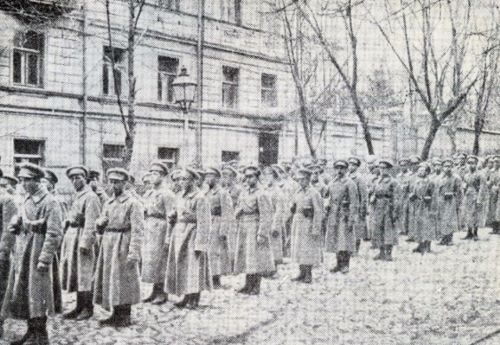
The Bolsheviks wanted a centralized “socialist” state over which they could rule.

By Dr. Bogdan Musiał
Professor of History
Cardinal Stefan Wyszyński University
Introduction
On 17 March 1917, two days after the abdication of the tsar, the Central Rada was formed in Kyiv and immediately called for Ukrainian autonomy and the transformation of the tsarist empire into a federation of free nations. Very soon, all parties and social organizations in Ukraine supported this demand. Very few were thinking of independence at that time. Against this background, the Rada sent a memorandum to the Provisional Government in May 1917 demanding far-reaching Ukrainian autonomy, even to the point of creating Ukrainian armed forces.1
At the beginning of June 1917, the Provisional Government rejected these demands, whereupon the Rada not only did not concede but radicalized its position. It now claimed for itself the right to represent the Ukrainian people and, on 16 June, established the General Secretariat as the future government. On 2 July, a delegation from the Provisional Government arrived in Kyiv to negotiate with the Rada. Both sides wanted a compromise, and the delegation signed a document recognizing the autonomy of Ukraine.2
In the weeks and months that followed, the Rada adopted a number of measures, made decisions, and issued demands on the Provisional Government that went far beyond autonomy. The result was increasingly sharp conflicts with the Provisional Government. On 18 July 1917, the Rada declared the General Secretariat to be the supreme ruling body in Ukraine and, in September, openly demanded the right of self-determination for Ukraine. On 2 November, the Third All-Ukrainian Military Congress was held in Kyiv, attended by some three thousand delegates representing about three million Ukrainian soldiers in the Russian army. The All-Ukrainian Constituent Assembly was announced while the congress was in session, paving the way for Ukrainian independence.3
Events unfolded very rapidly in Ukraine following the October putsch of 7 November 19174 in St. Petersburg and the Bolshevik seizure of power. The Rada rejected the Bolshevik claim to rule in Ukraine. The Bolshevik attempt to take power in Kyiv by force failed. Bolshevik forces were disarmed and driven from the city. The Rada also had to assert itself against the claim to power by representatives of the Provisional Government in Kyiv and the general staff of the Kyiv military district. On 11 and 12 November, forces loyal to the Rada fought against Russian forces in Kyiv and won. The pro-Russian troops then left the city, and the Rada assumed power.5 Some days later, on 20 November, the Rada proclaimed the Ukrainian People’s Republic. In its Third Universal, the Rada claimed full legislative and administrative powers for itself and for the General Secretariat as the government of the new republic. In its proclamation, it rejected the Bolsheviks’ claim to power but declared, at the same time, that the new republic wanted to establish a federation, the nature of which was not clearly defined, with the other nations of the old Russia on the basis of equality.6 The proclamation of 20 November did not therefore signify a final break with Russia.7
The measures taken by the new Ukrainian government in the military sphere were very important. The troops on the southwestern and Romanian front were renamed the “Ukrainian front” and placed under the command of the Rada government. This involved units from Brest-Litovsk all the way to Romania. Symon Petliura, a journalist, took over the important post of minister of war in the Ukrainian government with the task of creating a Ukrainian army out of these units. He was only partly successful in this task, as most of the Ukrainian soldiers had left their units and gone home.8
The Bolshevik Right of Self-Determination—“An Instrument in the Struggle for Socialism”
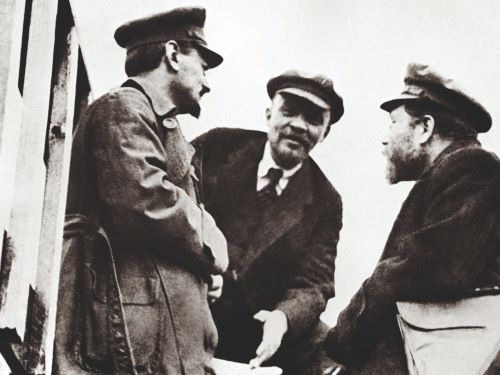
With regard to domestic policy, the most important watchwords and goals of the Ukrainian People’s Republic nominally differed very little from those of the Bolsheviks, with the exception of centralization and basic rights. In addition to this, on 15 November 1917, five days before the proclamation of the Ukrainian People’s Republic, the Bolsheviks issued their Declaration on the Rights of the Peoples of Russia. This declaration, signed by Lenin, Stalin, and Bukharin, promised freedom of self-determination to all the nationalities of Russia, including the right of secession and the creation of independent states.9
Nevertheless, the Bolsheviks rejected the Rada’s proclamation of the Ukrainian People’s Republic because what they really wanted, from the beginning, was a centralized “socialist” state over which they could rule. Stalin, in a conversation at the beginning of April 1918 with one of the journalists on the Bolshevik paper Pravda, explained Bolshevik goals with regard to the future shape of the Russian political system:
“In Russia…the forced unity of tsarism will give way to a voluntary federalism, so that this federalism, in the course of time, may give way to an equally voluntary and fraternal unity of the working masses of all Russia’s nations and ethnic groups. Federalism in Russia will be a transitional stage to a future socialist unity.”10
According to Stalin, the central administrative ruling body of the Russian Federative Republic, including not only Ukraine but also Poland and all other peripheral regions of the old tsarist empire, was the Council of People’s Commissars, in other words, the Bolshevik leadership.11 The Council of People’s Commissars (Sovet Narodnykh Komissarov, hereafter CPC) was established under Lenin’s leadership on the day following the October putsch. Stalin was the people’s commissar responsible for nationality policy.
The right to self-determination, like all other rights, was interpreted by the Bolsheviks in their own way (“dialectically”). They used it to legitimize and assert their own claim to power (“socialist unitarism”). Stalin declared this openly on 15 January 1918:
“The principle of self-determination must become an instrument in the struggle for socialism and subordinate to the principles of socialism.”12
From the outset, for ideological reasons, the Bolsheviks did not accept the formation of national states on the periphery of the old tsarist empire, regardless of their political orientation, and they used all possible means to counter such attempts. The case of Ukraine is exemplary, especially as the country was not just ideologically and politically but also economically important to the Bolsheviks. What was at stake was food (Ukraine had been the granary of the tsarist empire), energy (coal), and the steel industry of the Donets Basin. It comes as no surprise, therefore, that after the putsch and their initially failed attempt in Kyiv, the Bolsheviks kept up their efforts to conquer Ukraine. They attempted an uprising at the beginning of December 1918. Troops loyal to them attempted once again to use force to take power in Kyiv and other cities. These attempts were rebuffed by Ukrainian troops.13
A few days later, on 17 December, the Bolshevik regime issued its Manifesto to the Ukrainian People:
“…we, the Council of People’s Commissars, recognize the Ukrainian People’s Republic and its right to secede from Russia or enter into a treaty with the Russian Republic on federal or similar relations between them. We, the Council of People’s Commissars, recognize at once, unconditionally and without reservations, everything that pertains to the Ukrainian people’s national rights and national independence.”14
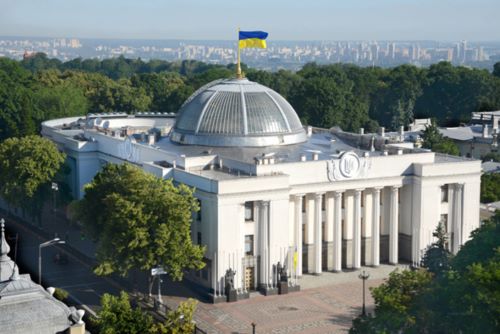
At the same time, Lenin’s manifesto was an ultimatum to the Rada, demanding that it submit itself militarily to the Bolshevik regime in order to join with the Bolsheviks in the struggle against counterrevolution. Further, Lenin demanded that the Rada cease attempts to disarm Bolshevik forces in Ukraine and that Ukrainian forces, which should join with the Bolsheviks to fight anti-Bolshevik insurgents in southern Ukraine, place themselves under Bolshevik command. The ultimatum also stated that, if no satisfactory reply were received within forty-eight hours, the CPC would declare war on Ukraine.15
On the same day that Lenin issued his ultimatum, the All-Ukrainian Congress of Soldiers’, Peasants’, and Workers’ Deputies began in Kyiv. The congress had been initiated by the Ukrainian Bolsheviks, who hoped that they could take power by “legal” means. The Rada government supported the calling of the congress, which began on 17 December. The Bolsheviks, however, found themselves in a minority. The great majority of delegates supported the Rada, which rejected Lenin’s ultimatum and declared itself neutral in the Russian civil war. Most of the Bolshevik delegates then left the congress and went to Kharkiv.16 The Ukrainian People’s Republic was now at war with Bolshevik Russia. When the ultimatum of 17 December expired, the CPC declared war on the Ukrainian People’s Republic (18 December). On the same day, the CPC appointed Volodymyr Antonov-Ovsiienko commander in chief of Bolshevik forces in the war against the Ukrainian People’s Republic and against anti-Bolshevik forces in southern Ukraine.17 In Kharkiv, the Bolsheviks created pseudo-Ukrainian ruling structures as a way of legitimizing externally their claim to power in Ukraine. The Bolshevik delegates from the All-Ukrainian Congress, who had left Kyiv on 18 December and gone to Kharkiv, proclaimed the Ukrainian Soviet Socialist Republic there on 22 December 1917.18 Three days later, the Bolsheviks formed a Central Executive Committee and transferred to it all power in Ukraine. On 26 December, in a telegram to the CPC, the Executive Committee declared, in the name of “the Ukrainian people,” that it opposed war with Russia, and concluded with these words: “In the name of the young Soviet power in Ukraine, we send our greetings to the consolidating all-Russian Soviet power.”19
On 29 December 1917, the CPC welcomed the formation of the “Ukrainian Soviet Socialist Republic” and assured its “brother republic” of its full support “in the struggle for peace.”20 This created the “international” basis for the legitimation of its claim to power in Ukraine. On 1 January 1918, Lenin named Sergo Ordzhonikidze, a close confidant of Stalin, as special commissar for Ukraine. His task was to unite and lead the activities of Soviet organizations in Ukraine in all fields (such as military, provisions, and banking).21 From mid-December, Bolshevik units were concentrated in Kharkiv and the surrounding area, and it was from here that they were to conquer Ukraine. Those troops of the Black Sea Fleet who had sided with the Bolsheviks operated in southern Ukraine. By the beginning of January 1918, they had taken a number of towns on the Black Sea coast.
The Rada attempted to organize resistance but had inadequate troops to counter the Bolshevik offensive. In the days and weeks that followed, the Bolsheviks captured eastern Ukraine and made advances in the south. In January 1918 the Red troops captured many towns in the east and south and advanced on Kyiv. Ukrainian forces were disintegrating. On the night of 29 January, the Bolsheviks in Kyiv organized an uprising with the participation of workers from city factories. Street battles followed, lasting a number of days, until troops loyal to the Rada managed to suppress the uprising on 4 February. Nevertheless, the hours of the Rada government seemed numbered in those days, as it was only in Kyiv and the surrounding area that they were able to hold out. Four days later, on 8 February, Bolshevik troops took Kyiv, and the Rada fled to Zhytomyr. By February, the whole of eastern and central Ukraine was in Bolshevik hands.22
The Central Powers Drive the Bolsheviks out of Ukraine
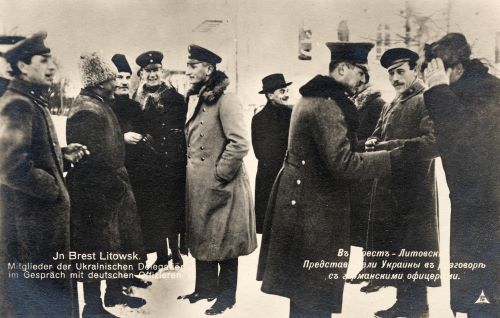
Support from the Central Powers meant that the Bolshevik occupation of Ukraine did not spell the end of the first Ukrainian nation-state. German troops began an offensive along the whole eastern front on 18 February 1918 and advanced 250 km in five days. They met with no resistance, as the Russian army had actually disintegrated. The Germans invaded Ukraine, followed ten days later by Austro-Hungarian troops.23 Confronted with the German advance, the Bolsheviks reluctantly accepted the severe peace conditions set down by the Central Powers. On 3 March 1918, both parties signed a peace treaty in Brest-Litovsk. In this treaty, Bolshevik Russia gave up Poland, Courland, Latvia, Lithuania, Estonia, Finland, and Ukraine. “As a European power, Russia reverted economically and territorially to the position of Muscovy in the seventeenth century.”24 Russia lost one-third of its prewar population, four-fifths of its coal and iron reserves, and one-third of its grain.25
For Russia, the most painful loss was Ukraine because of its grain-growing areas and heavy industry (coal, iron ore, and steel). Karl Radek, one of the leading Bolsheviks, lamented the economic consequences of the Brest treaty:
“The Brest peace treaty separated from Russia the industrial regions of Poland, the Baltic, and the Donets Basin, as well as the most fertile regions of Ukraine. It reduced the productive capacity of the Russian economy and hampered the task of healing the wounds of war…which can only be brought about by means of socialist organized production.”26
The provisions of the Brest-Litovsk peace treaty were a humiliating defeat with serious consequences for the Bolshevik regime, if it were to last. Stalin spoke of a partition that the Central Powers had put in place between “socialist Russia and the revolutionary West.”27 Added to this were the catastrophic economic consequences of its territorial losses.
Not surprisingly, the Bolshevik regime never accepted its territorial losses. This was particularly true with respect to Ukraine. The Communist Party (Bolshevik) of Ukraine or CP(B)U was formed in April 1918. At its first party congress, in July 1918, it decided to affiliate itself with the Russian Communist Party (Bolshevik) as a regional organization. One of the initiators of the decision, the Russian German Emmanuil Kviring, declared that “the independence of Ukraine had no economic foundation” and that a prolonged separation of Ukraine from Russia would only be possible with foreign support. Mykola Skrypnyk, another delegate at the party congress, declared:
“The independence [of Ukraine] serves as a cover for the counterrevolutionary struggle against Soviet power.”28
In November 1918, one year after the October putsch, Central and Eastern Europe were again in the midst of upheavals that would turn the political map of the region on its head. In the autumn of 1918, the German front was facing collapse, and the German government was forced to ask for a truce with the Western powers. This was signed on 11 November 1918 in Compiègne and amounted to a capitulation. Article 11 of the truce agreement provided for an immediate withdrawal of all German troops in the East, including from former Russian territories such as Ukraine, back to the German borders of 1914. Article 15 annulled the Brest-Litovsk treaty.29 In the previous week, on 3–4 November, Austria-Hungary had signed a truce agreement with the Entente also agreeing to withdraw its troops immediately from the occupied territories and demobilize its army.30 The Danube Monarchy collapsed shortly afterward.
A power vacuum existed in Central and Eastern Europe in the autumn of 1918, leading to the creation of a number of new states. A completely new situation also developed in Ukraine following the withdrawal of the Central Powers. Hetman Skoropadsky fled to Berlin in December 1918. The Directory took power in Kyiv, led by Symon Petliura and Volodymyr Vynnychenko, and revived the Ukrainian People’s Republic. The Bolshevik regime once again renewed its claim to power in Ukraine, as in the other territories evacuated by the Central Powers. But the Bolsheviks always took care to ensure that their expansion had the appearance of granting the right to self-determination. On 29 November 1918, Lenin sent a telegram to Jukums Vācietis, commander in chief of the Red Army, with the following instructions:
“As our troops advance westward and into Ukraine, provisional provincial governments should be created with the task of establishing soviets in the area. This has the good side that it prevents the chauvinists in Ukraine, Lithuania, Latvia, and Estonia from portraying our advance as an occupation and creates a favorable climate for the further advance of our troops.”31
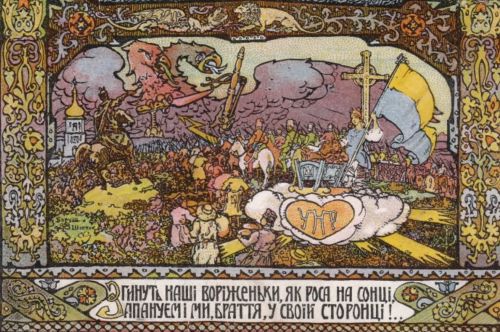
Two weeks previously, on 17 November, Lenin and Stalin had established the Ukrainian Revolutionary Council, which was to lead the struggle in Ukraine. Three days later, on 20 November, the Bolsheviks (“with the participation and direct support of Stalin”) established the Provisional Workers’ and Peasants’ Government of Ukraine.32 On 29 November 1918, this government, led by Khristian Rakovsky, proclaimed the restoration of Soviet power in Ukraine. A few weeks later, the Bolsheviks began their offensive against the Ukrainian People’s Republic.33 At the end of 1918 Bolshevik troops, portrayed externally as “Soviet Ukrainian insurgents,” began their attack on independent Ukraine. They occupied Kharkiv on 3 January and continued their advance. Ukrainian national units were disintegrating. Soldiers deserted, formed themselves into bands, robbed, plundered, and murdered. Whole units went over to the Bolsheviks. Ukraine sank into chaos, and the government of the young republic was unable to control the situation. The Reds advanced deep into eastern and northern Ukraine. They occupied Kyiv on 6 February and established their “Ukrainian” Soviet authorities, such as the “Ukrainian” Council of Commissars under Rakovsky. In the weeks that followed, the Bolsheviks captured central Ukraine and introduced an economic and political regime similar to that in other areas but much more radical: war communism in the countryside (requisitioning of food), the creation of committees of “poor peasants” to disrupt village life, and sovkhozy (state farms) to replace the estates.34
In April 1919 the Bolshevik regime decided to dispense with the appearance of an “independent” Soviet Ukraine. On 23 April 1919, the Politburo of the Central Committee of the Russian Communist Party asked the Central Committee of the Communist Party of Ukraine to work out how, and in what form, the “unification” of Ukraine with Russia could be achieved. At the same time, the Politburo sent Adolf Joffe to Ukraine to strengthen the “centralist-oriented elements” there.35 Some weeks later, on 2 June 1919, the Politburo dissolved the “independent” Soviet Ukrainian armed forces, i.e., the Ukrainian Front, and placed its troops of the southern front (previously the 2nd Ukrainian Army) and of the 12th Army under the command of the Red Army. The Politburo also divided Ukraine into military districts.36 In August, the Politburo ordered the unification of the Ukrainian Special Commission to Combat Counterrevolution, Speculation, and Sabotage (VChK) with the Soviet Russian VChK.37
By April 1919, remnants of the Ukrainian national units under Petliura remained only in the western parts of Ukraine, in Volhynia and Galicia, where they were also fighting against Polish troops. In the summer of 1919, events took a turn. On 1 September 1919, after months of negotiations, the Ukrainian national government arranged a truce with Poland and a Polish-Ukrainian demarcation line.38 The truce with Poland enabled Petliura to unite all the remaining Ukrainian national forces against the Bolsheviks, who were meanwhile confronting, for the second time, the collapse of their Ukrainian front and their rule in Ukraine. On 11 August 1919, Trotsky complained:
“There are difficulties in Soviet Ukraine. The enemy is pressing us from all sides…. The black August of the previous year [in Russia] is being repeated in Ukraine…. The young Ukrainian Red Army…is withdrawing. The enemies are gloating.”39
The Bolsheviks in Ukraine at this time were being confronted by a White offensive and peasant uprisings that they themselves had provoked by their ruthless occupation policy.
Soviet rule had only been nominal in Ukraine in the first months of 1918. The Bolsheviks did not really have the time to establish their own power structures or to take the kind of measures that were typical for them, such as the ruthless requisitioning of food, mass terror, and the struggle against the church and against the urban and village elites. What they had promised was work for the workers and land for the peasants. The peasants remembered those slogans.40 But the situation was completely different when the Bolsheviks occupied Ukraine for the second time in 1919. The peasants waited in vain for the land they had been promised as the Bolsheviks turned the estates into collective farms or large state farms. War communism raged in the countryside and in the towns, with its forced requisitioning of food, plundering, political murder, and the mass terror of the VChK. Thousands of rural and urban residents lost their lives. This provoked widespread armed resistance, and local uprisings took place throughout Bolshevik-occupied Ukraine. In some cases, armies were formed by thousands of insurgents. Among the largest of them were the armies of Nykyfor Hryhoriiv in central Ukraine and Nestor Makhno in eastern Ukraine.41
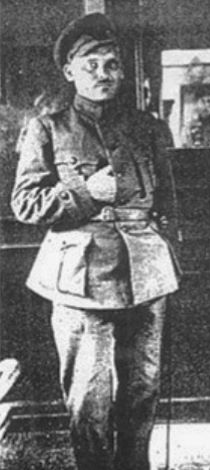
Otaman Hryhoriiv had already organized a partisan unit during the period of German-Austro-Hungarian rule in Ukraine and supported Petliura afterward. He had about six thousand men at the end of 1918. In February 1919, however, he went over to the Soviet side. His unit was integrated as an independent brigade of the Soviet Ukrainian Division. On 7 May 1919, however, he mutinied and organized an anti-Bolshevik uprising in the rear of the Red Army, which was then fighting against Denikin’s army. At this time, he was in command of more than 20,000 insurgents with access to 50 cannons, 700 machine guns, and 6 tanks. Their slogans were “Ukraine for the Ukrainians,” “Power to the Ukrainian people’s soviets without communists,” and “Free trade in grain.” The uprising engulfed the southern regions of Ukraine (Cherkasy, Uman, Kremenchuk, Katerynoslav, Mykolaiv, and other towns). In June, Hryhoriiv joined forces with another Ukrainian partisan leader, Nestor Makhno. But conflicts soon arose between them and, on 27 July, Makhno murdered Hryhoriiv.42
In eastern Ukraine in 1918, the anarchist Makhno had organized armed resistance to the occupation. Following the withdrawal of those armies, Makhno fought with the Bolsheviks against Petliura. In February 1919 he broke with the Bolsheviks. In the territories under his control, especially in the region of Katerynoslav, he created an anarchist peasant republic, centered in Huliaipole, in which Bolshevik power structures were not permitted, nor were such measures as the requisitioning of grain. At the end of May 1919, the Bolsheviks declared him an outlaw and took up arms against him and his formations. Denikin’s offensive, however, forced them once again to form an alliance with Makhno. Makhno’s army then made a decisive contribution to the Bolshevik victory over Denikin’s forces.43 The Bolsheviks, however, had no intention of sticking to their agreement. At the beginning of January 1920, with Denikin’s army defeated, Red Army troops began to encircle Makhno’s forces. The Bolsheviks ordered Makhno and his troops to fight the Poles, but Makhno refused. The Bolsheviks then treacherously attacked Makhno’s army, which numbered about twenty thousand men at the time.44 A bitter and, for the Bolsheviks, pointless battle broke out in eastern Ukraine. On 26 June 1920, Feliks Dzerzhinsky reported desperately to Lenin:
“I’ve had no luck with Makhno. We could deal with him quickly if we had a cavalry. But that’s something I do not have.”45
In the spring of 1919, hundreds of rebel groups and units were formed in Ukraine, making it impossible for the Bolsheviks to establish and maintain their rule. On 11 June 1919 Nikolai Podvoisky, a Bolshevik official sent to Ukraine, sent a memorandum to Lenin on the critical situation in Ukraine in which he wrote:
“Kyiv was cut off for two months by counterrevolutionary bands…. In the spring [of 1919], the whole of petty-bourgeois Ukraine…became a counterrevolutionary camp.”46
The uprisings crippled the Ukrainian economy: food and other provisions, industrial production, transport, the production and delivery of wood and coal. Ukraine sank into economic chaos and political anarchy. Podvoisky complained in his memorandum that the country had become ungovernable. Two months would be needed to prepare the Red Army for these new circumstances and muster an army of thirty thousand men that would fight on the “internal front.”47 Two months later, the situation had not improved from the Bolshevik point of view. On 6 August 1919, prompted by a telegram from Trotsky, the Politburo of the Russian Communist Party debated this issue. Trotsky demanded that the regions around Kyiv, Odesa, Mykolaiv, and Kherson be cleared of the “banditry” that held sway in Ukraine and was preventing the recruitment and organization of an army there. The Politburo decided to send five hundred members of the Department for Special Tasks and from other reliable organizations, such as the VChK, to Ukraine.48
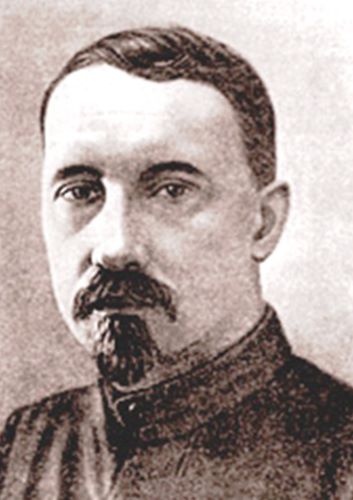
In addition to the uprisings in Ukraine, the Bolsheviks were confronted, from May 1919, by a major offensive of Denikin’s forces in southern Russia. His units advanced toward Moscow in the summer of 1919, with troops flanking westward into Ukraine. They soon drove the demoralized Bolshevik troops out of Ukraine, occupying the Donets Basin, eastern and southern Ukraine, and taking Kyiv on 31 August. On the day before, Ukrainian national troops had entered Kyiv. At this time, they were fighting with the Whites against the Bolsheviks and had already liberated large parts of central Ukraine.49 But conflict soon emerged between the nationalist forces under Petliura and the Whites, who, like the Bolsheviks, rejected independence for Ukraine. The situation intensified and, on 11 September, Petliura declared war on Denikin’s Volunteer Army and even asked Lenin for assistance. At the end of September, nationalist and Bolshevik forces ceased fighting each other. In October they became allies against the Whites, and the Bolsheviks promised to deliver weapons and munitions to the nationalist forces.50
On 11 October, the Politburo decided:
“A political and military-technical agreement with Petliura is desirable. This agreement should be made public in order to compromise Petliura with the Entente…. All discussions are to be conducted as negotiations with the bourgeoisie of an oppressed nation that is opposed to Great Russian monarchism and imperialism.”51
On 11 September, the Politburo had decided to dissolve the whole Bolshevik governmental apparatus in Ukraine, leaving only a “nominal” Ukrainian government.52
On 20 October, Denikin’s advancing Volunteer Army suffered a heavy defeat as it approached Orel, and again two days later at Voronezh. Other defeats followed, and the Whites began to retreat. In November and December 1919, the Bolsheviks again occupied almost the whole of central and eastern Ukraine and captured Kyiv at the beginning of December. By the end of December, the Whites held only the Crimea and Odesa. Petliura, of no more use to the Bolsheviks, fled with his units to Poland.53
The “Unification” of Ukraine and Soviet Russia and the War with Poland
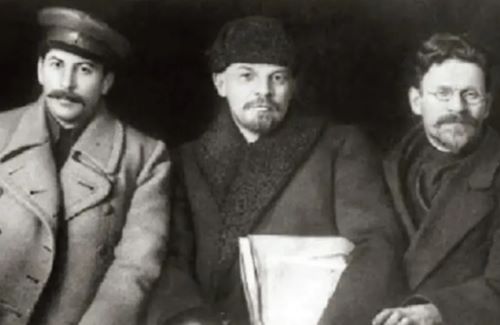
The Bolsheviks now began, during their third advance into Ukraine, to establish ruling bodies and complete the formal “unification” of Ukraine and Soviet Russia. On 20 and 21 November 1919, the Politburo debated its policy toward Ukraine and decided to proceed with the “careful preparation for the unification” of Ukraine and Soviet Russia that had been arranged on 2 June 1919. The Politburo also ordered the formation of an All-Ukrainian Revolutionary Committee that would take over from the “Ukrainian government” and govern until the convocation of the Ukrainian Congress of Soviets, which would decide on unification. The Politburo also decided to promote the Ukrainian language and culture and to liquidate the large landed estates and distribute the land among the poor peasants. The creation of state farms was to take place only in exceptional circumstances, and collectivization was to proceed without force.54
In the meantime, on 2 December 1919, Petliura signed an agreement in the name of the Ukrainian People’s Republic with the Polish government that recognized the independence of Ukraine. Poland committed itself to support the Ukrainian People’s Republic. In return, Petliura ceded to Poland the territories of Eastern Galicia and Volhynia, which were already occupied by the Poles.55 This agreement prompted the Bolshevik regime, which was preparing an offensive against Poland,56 to modify its Ukrainian policy.57 On 9 February 1920 Georgii Chicherin, the people’s commissar for foreign affairs, wrote to the Politburo of the Russian Communist Party and to Lenin personally that, according to Western media reports, Poland would demand the independence of Ukraine from Soviet Russia. Chicherin also assumed that Poland would attempt to achieve this by force of arms. He wrote:
“Either we give up Ukraine or the Poles, following a war for Ukraine, will march on Moscow. Or we attempt to localize the war by means of an immediate separation of a Red independent Ukraine. To avoid a Polish attack, we should reintroduce the independence of the Ukrainian Soviet Republic and postpone federation to a future date…. The working masses in the West see the struggle for Ukrainian independence as the authentic struggle of a nation against its oppressor.”58
Four days later, Chicherin confirmed his view of the situation and pointed out that anti-Bolshevik forces in Ukraine would support the Poles and Petliura. It was therefore essential to formally separate Red Ukraine from Soviet Russia.59
The Politburo then halted the formal incorporation (“unification”) of Ukraine and Bolshevik Russia, especially as, on 25 April 1920, Polish units began an offensive against the Red Army in Ukraine as a way of preempting a Soviet attack. The strategic goal of “Operation Kyiv” was to drive Bolshevik forces out of central Ukraine beyond the Dnipro, thereby allowing the government of the Ukrainian People’s Republic to exercise power and establish Ukrainian units that would take up the struggle against Soviet forces without the help of Polish troops. An anti-Bolshevik state was to be created that would then be a Polish ally.60
Bolshevik troops in Ukraine were not just fighting Polish units but were also being confronted with uprisings behind their lines. According to a VChK situation report for the period 15–30 April 1920, “Ukraine is now experiencing the next wave of uprisings.”61 Both central and eastern Ukraine were affected. Soldiers of the First Galician Brigade, consisting of Ukrainian Galicians, murdered the commissar and turned their weapons on the Bolsheviks. The Bolshevik leadership, as a result, had the remaining Eastern Galician units within the Red Army disarmed and their officers and soldiers interned. Hundreds of them lost their lives. Numerous “bands” attacked the retreating soldiers of the Red Army. Insurgent peasants killed communists as well as officers and soldiers of the Red Army.62

The result was that Polish troops marched into Kyiv on 7 May and even moved eastward beyond the Dnipro. But they did not pursue the demoralized troops of the Red Army any farther. Piłsudski’s plan was to establish a strategic line along the Dnipro and then, as rapidly as possible, to station Polish troops in the Belarusian sector to stem the advance of concentrating Soviet forces. But Petliura did not manage to raise forces strong enough to match the Red Army, although he had support in the country, as Stalin himself had to admit. On 11 June 1920, Stalin sent a telegram to Trotsky:
“In the regions of western Ukraine, in the Kyiv region and, to some extent, in Poltava, Petliura has raised a serious force that can beat our Soviet forces. Village teachers, medical assistants, agronomists, and cooperative leaders support Petliura. They are organizing the middle and wealthy farmers against the revolution and the katsap….63 The only thing the peasants know about Soviet power is that it has many troops and takes away their grain.”64
In the second half of May, however, the Bolsheviks regained the initiative and forced Polish troops out of Ukraine. By the end of June, Polish forces were more or less back to where they had been on 25 April, and the Red Army was preparing for a decisive offensive that commenced at the beginning of July.65
While Red Army units occupied central and western Ukraine and advanced westward, a partisan war against the Bolsheviks was raging in the Ukrainian hinterland. The Bolsheviks ruled the towns, but in the countryside it was the insurgents who were in charge. On 25 June 1920, Dzerzhinsky telegraphed from Kharkiv:
“The whole counterrevolution is happening here in the [Ukrainian] countryside.”66
Jan Rutman reported, on 26 May 1920, on the work of the War Tribunals in Ukraine and stated that resistance was more widespread among the Ukrainian population than it was in Russia. Young and old men, women and children were taking part in the resistance. According to Rutman, they were fighting with firearms, pitchforks, and flails.67 Dzerzhinsky, whom the Politburo had sent to Ukraine in April 1920 to fight “banditry,” i.e., anti-Bolshevik uprisings, reported on 22 May:
“Tackling banditry here will not be so easy in the short term.”68
He was right.
The situation long remained critical for the Bolsheviks in Ukraine, and the country was practically ungovernable in 1920. On 15 October 1920, Lenin complained:
“…we cannot get grain from Ukraine because warfare is raging there.”69
At the end of October 1920, according to the estimates of Soviet officials, there were about forty thousand armed “bandits” in Ukraine fighting against communist power.70 The Bolsheviks did not have adequate forces at the time to break the armed anti-Bolshevik resistance and suppress the uprisings.
In the summer and early autumn of 1920, the main forces of the Red Army were deployed on the Polish front and against the forces of the ex-tsarist officer General Petr Wrangel. The Bolshevik westward offensive on the Polish front collapsed on 15 August outside Warsaw, and the triumphant advance turned into a desperate retreat in the second half of August. Confronted with a Polish counteroffensive and, at the same time, with uprisings behind their own lines, the Bolsheviks asked for a truce with the Polish government, which was arranged on 12 October. Peace negotiations were begun in Riga and concluded on 18 March 1921. The peace treaty established the Polish-Soviet border, and the Polish side withdrew all claims east of the new border and in Soviet Ukraine.71
In April 1920, Wrangel raised the Russian Army in the Crimea out of the remnants of Denikin’s Volunteer Army and continued the fight against the Bolsheviks. In June 1920, Wrangel’s forces began an offensive from the Crimea into southern Ukraine and had achieved remarkable success by September. It was against this background that Nestor Makhno, who had been fighting with his insurgent forces against the Bolsheviks since January 1920, changed sides again and, on 2 October 1920, formed an alliance with the Bolsheviks for the third time in order to fight Wrangel.72
Following the implementation of the truce with Poland on 18 October 1920, Red Army troops under Mikhail Frunze, joined by Makhno’s army, began an offensive against Wrangel that forced his troops to withdraw to the Crimea. In this desperate situation, Wrangel evacuated his troops with the help of the British fleet. The last ship with evacuees arrived in Istanbul on 16 November 1920.73
The “Pacification” of Ukraine and the Establishment of Communist Rule
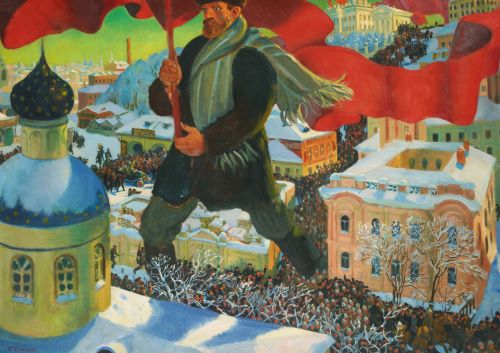
In November 1920, the Bolsheviks finally achieved a definitive victory in the Russian civil war. They were now able to deploy all their forces for the suppression of peasant uprisings, including in Ukraine, which was now being defended only by peasant insurgents. Once the Bolsheviks were able to deploy all their forces systematically, these insurgents, in the medium and long term, were fighting losing battles.
On 2 November 1920, Trotsky wrote a memorandum on Ukraine that he sent to Lenin, Stalin, and other leading Bolsheviks. In his introduction, he wrote:
“Soviet power has maintained itself in Ukraine up to now (and has done so very poorly) thanks especially to the authority of Moscow and to the Great Russian communists and the Russian Red Army…. The existing regime cannot be considered normal. Economically, Ukraine is an anarchy that is being covered by Moscow’s bureaucratic centralism.”
Trotsky also pointed out that, even after the victory over Wrangel and Petliura, Ukraine remained the most vulnerable part of the republic. Without the Donets Basin, neither the Ukrainian nor the whole Russian economy could be rebuilt.74
On 26 November 1920, Trotsky informed Lenin that Ukraine was gradually building up enough troops and that the battle against the insurgents was now on the agenda:
“In this way, it is completely possible to aim for an imminent breakthrough.”75
Four days later, the Revolutionary War Council met under Trotsky and discussed the tasks of military officials in Ukraine. The main task was the liquidation of Ukrainian “banditry” because “the elimination of bandits from Ukraine and the permanent security of the Soviet regime are a life-and-death issue for Soviet Ukraine and an issue of extraordinary importance for the whole Soviet Federation and its international situation.”76
The War Council decided to unite all Soviet forces in Ukraine under the command of Mikhail Frunze. The southern front was given the task of defending the Donets Basin against Makhno “bands,”77 as the Bolsheviks had broken their agreement with Makhno following the victory over Wrangel. On 24 November 1920, Frunze instructed his forces to destroy the Makhnovshchyna immediately. Two days later, Frunze declared Makhno and his army to be enemies of the Soviet Republic and of the revolution, ordering his troops to make a surprise attack and defeat them. The Makhno forces suffered heavy losses but were not wiped out. They renewed their fight against the Bolsheviks and caused them considerable losses. In the spring of 1921, however, Makhno’s forces suffered heavy defeats and disintegrated into smaller groups that were gradually wiped out or disbanded. On 28 August 1921, Makhno and the remnants of his army crossed the border to Romania and ended their struggle against the Bolsheviks.78
The Makhno Army was certainly not the only major “band” in Ukraine, but it was the biggest. In order to liquidate these “bands,” the Commission for the Liquidation of Banditry in Ukraine, led by Mikhail Frunze, was established in December 1920. Other members of the commission included Feliks Dzerzhinsky, Sergei Kamenev, and Khristian Rakovsky. In this struggle against “banditry,” the Bolsheviks deployed internal security units, field troops of the Red Army, troops of the VChK and various other armed units, altogether a force of some hundreds of thousands, while the insurgent forces were estimated in May 1921 to number between forty and fifty thousand men. Nonetheless, in the winter of 1920–21 the situation for the Bolsheviks in Ukraine was so difficult that they had to employ partisan methods against the insurgents.79
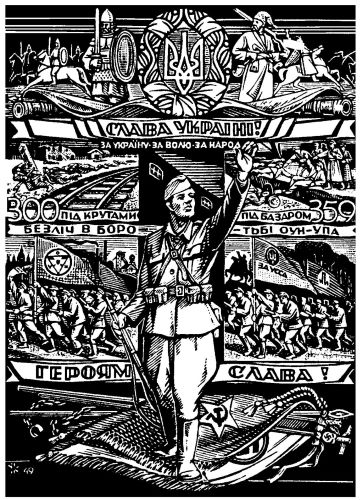
At the same time, the Bolsheviks were developing uniform guidelines for the combat of banditry in Ukraine that were signed on 8 December 1920 by Rakovsky, Frunze, and Molotov. The guidelines contained the following provisions: The population was to be disarmed. If weapons were not surrendered, hostages were to be taken and shot. Anyone who did not voluntarily surrender a weapon was to be shot. The population was to be considered liable for all attacks on transport lines and bridges. Hostages were to be taken from villages along the railway lines and telegraph lines up to a distance of fifteen versts.80 In areas and localities particularly “infested by bands,” the population was also to be considered liable for all anti-Bolshevik attacks; in such cases, hostages were also to be taken. Fines were also possible, as well as the burning or destruction of the houses of “bandits.” Hostages were always to be taken from the better-off strata of the population. Thus the guidelines.81
These measures were nothing new in Ukraine. The Bolsheviks had been using such methods to fight against Ukrainian insurgents since 1919. In May 1919, Trotsky had ordered the disarming of the Ukrainian population. June 1919 was the deadline for weapons to be surrendered and, from 1 July, the non-surrender of weapons was to be punished ruthlessly.82 On 30 June 1919, Rakovsky and Joffe informed Trotsky and Lenin about the critical situation in Ukraine and the many uprisings, which were to be combated by means of a general mobilization of men between the ages of 18 and 40, as well as by means of hostages and fines.83
With time, the Bolsheviks radicalized their “methods of combating banditry” in Ukraine and elsewhere. On 22 May 1920 Robert Eideman, commander of troops in the rear of the southwestern front in Ukraine, ordered the collection of weapons in the villages. If a village refused to surrender its weapons, it was to be surrounded, and hostages were to be taken from the village population and shot. If this was not enough, the village was to be bombarded by cannon. In villages known to support the Makhno movement, hostages were to be taken and shot if the village did not distance itself from the Makhno movement. Villages along the railway line were to be made responsible and considered liable for the security of the section of line assigned to them.84
On 22 May 1920, Jan Rutman also reported on the situation in Ukraine and on the work of the Bolshevik War Tribunals there. He reported widespread resistance and recommended the following method to “pacify” the Ukrainian villages: the number of kulaks in each village was to be established, and then one in five or one in ten, depending on the situation, was to be shot and their property confiscated.85 Of course, these orders and recommendations were not just theoretical but were carried out in practice by the Soviet communists. They laid waste whole areas, burned villages, and tortured residents. In May 1921, for instance, the Bolsheviks “pacified” villages around Izium and Lyman (southeast of Kharkiv) as follows:
“We called together an assembly, picked out five kulaks or suspected persons, and killed them with swords. Such measures intimidated the peasants and led them to reveal the bandits.”86
On 7 February 1921, Frunze reported to Lenin on significant successes in the combat of “Ukrainian banditry.” As a result, the number of bandits at the end of October 1920 (40,000) had gone down to 6,500. In spite of this success, Frunze was not especially confident:
“Banditry has declined. That’s a fact. But we can expect it to increase again in the spring.”87
Although Frunze’s prognosis was correct, the Bolsheviks succeeded in defeating the major bands in Ukraine by the summer of 1921, as they did in other areas of the former tsarist empire under their rule.88
On 1 September 1921, there were still 2,500 “bandits” in Soviet Ukraine who, according to data from the Intelligence Directorate of the Red Army, were organized in groups and were fighting against communist rule. In the following weeks and months, according to Soviet estimates, there were 3,300 “bandits” and 58 “bands” on 15 October, growing to 6,752 by 1 November.89 After that, the number of “bandits” and “bands” diminished, and the general “band situation” in Ukraine and elsewhere gradually improved. By the end of 1921, the Bolsheviks had withstood the worst and were now combating relatively few insurgents in Ukraine.90 On 27 December 1921, Trotsky declared at the Ninth Congress of Soviets:
“Banditry as a broad social phenomenon, as armed units of broader kulak masses and of parts of the middle peasant masses, is a thing of the past.”91
It took unprecedented mass terror, costing the lives of many thousands of people, to break the resistance of the peasantry in Ukraine and elsewhere to Bolshevik rule. The total number of victims of Red revolutionary terror is estimated today to have been 2.31 million, hundreds of thousands of whom were Ukrainians. The best-known mass crimes committed by the Bolsheviks in Ukraine were: shootings in Kyiv in February 1918 (2,000 victims) and from February to August 1919 (3,000 victims), in Kharkiv from March to June 1919 (3,000 victims), in Odesa from April to September 1919 (2,200 victims), in Poltava from April to July 1919 (2,000 victims), in the Crimea from December 1920 to July 1921 (between 50,000 and 76,000 victims), as well as shootings of hostages in November 1921 (5,000 victims). The number of victims of Bolshevik terror in the countryside is unknown but was certainly in the tens of thousands.92 Added to this were the victims of famine. In 1921–22 alone, according to estimates made at the time, more than 26 million people were suffering from hunger as a result of Bolshevik plundering. The regions especially affected were southern Ukraine, the Crimea, the Volga region, and the regions around the Kama River and the central course of the Don. The number of those who died from malnourishment in 1921 to 1922 is estimated to have been five if not six million.93
All this brought the armed resistance in Ukraine and other Bolshevik-ruled territories to an end, allowing the Bolshevik regime to stabilize and secure its rule. The gradual rebuilding of the Ukrainian and the whole Soviet economy began in the spring of 1921 with the New Economic Policy (NEP). Tax-in-kind replaced requisitioning, in other words, the peasants had to deliver part of their produce as tax to the government. They could dispose of the rest independently on the free market.94 The NEP stimulated the development of the rural economy, small businesses, crafts, trade, and light industry in general, all of which enabled the supply of industrial goods to the villages.95 This contributed to peace in the countryside. It was, after all, the forced requisitioning of food (war communism) that had frequently led to the peasant uprisings in the first place.
The Formation of the Union of Soviet Socialist Republics and the Ukrainian Question
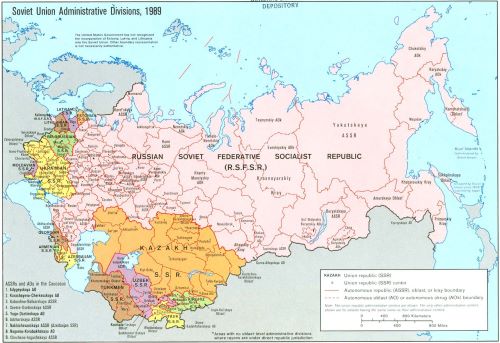
In the summer of 1922, the Bolsheviks gave a new political form to the territories ruled by them. In August 1922 the Central Committee of the Russian Communist Party established a commission, chaired by Stalin, which was given the task of dealing with the mutual relations between Bolshevik Russia, Ukraine, Belarus, and the Caucasian Federation and making appropriate recommendations on how these should be regulated.96 Until then, the individual republics had been formally independent and had their own governments. This was, of course, only a fictitious independence. In reality, it was Lenin and his comrades in the Politburo who ruled the individual republics.97
On the nationality question, Stalin worked closely with Dmytro Manuilsky, who consulted him on 4 September 1922 about the political system of Bolshevik states. Manuilsky thought that the republican system should be replaced by a system of autonomy, for which he argued as follows: “The experience of the past year has shown that the existing system in the periphery, especially in Ukraine, leads to numerous conflicts between central and regional authorities. This situation cannot continue.” He went on:
“The formation of independent republics on the periphery, with their own TsIKs [Central Executive Committees] and Sovnarkomy [Councils of People’s Commissars], corresponded to a certain stage of our revolution that we could call the ‘national’ stage…. This was a necessary concession to the nationalist elements…. Without doubt, the introduction of autonomy where the regime had been ‘independent’ will influence the tempo of the transition that we call ‘change by stages.’ On the periphery of our republic, especially in Ukraine, the national element will delay this ‘change by stages.’ The introduction of autonomy will hold back the Ukrainian transition for a certain time, but it will not produce any national movement in opposition to this course because there is no basis for it among the Ukrainian intelligentsia. The Ukrainian peasant has no interest in ‘national’ questions and will no longer participate in political bands.”98
This argument convinced Stalin, and at its session of 23–24 September 1922 the commission ratified Stalin’s plan for the “autonomization” of the peripheral Soviet republics, in other words, their integration into the Russian Soviet Republic as autonomous formations.99 The day before, Stalin had explained his plan to Lenin:
“The existing disorder and total chaos are creating conflicts, complaints, and irritations and are crippling economic activity in the whole of Russia…. If we do not…now replace the formal (fictitious) independence with formal (and real) autonomy, it will be much more difficult in another year to defend the actual unity of the Soviet republics.”100
Lenin was not convinced, however, and insisted on the formation of a union of “equal” Soviet republics and maintaining the appearance of independence of the peripheral republics. He was thinking of the future world revolution and the formation of a “Union of Soviet Republics of Europe and Asia.” Lenin prevailed and, on 6 October 1922, the plenum of the Central Committee of the Russian Communist Party changed Stalin’s plan. On 30 December 1922, the First Congress of Soviets approved Lenin’s proposal for the formation of the Union of Soviet Socialist Republics (USSR). The USSR now existed as a political formation and continued until 1991.101
But nothing changed in the relations between the peripheral republics and Moscow. For the next sixty-nine years, the Ukrainian Soviet Republic existed with the appearance of independence, but de facto it was one of the provinces of the communist empire ruled from Moscow. By the same token, the formation of the USSR did not end the terror in Ukraine. It actually reached its high point in the 1930s, during the Stalin era. The consequences of communist rule were catastrophic for Ukraine and Ukrainians in every respect. It will take generations before the economic, social, and moral aberrations of the period of communist rule can be overcome in Ukraine.
Endnotes
- M. V. Sokolova, “Velikoderzhavnost’ protiv natsionalizma: Vremennoe pravitel’stvo i Ukrainskaia tsentral’naia rada (fevral’–oktiabr’ 1917),” accessed 1 November 2010, http://www.hist.msu.ru/Labs/UkrBel/sokolova.htm; Oleh Pidhainy, The Ukrainian-Polish Problem in the Dissolution of the Russian Empire, 1914–1917 (Toronto and New York, 1962), 44–62.
- M. V. Sokolova, Istoriia Rossii. XX vek: 1894–1939 (Moscow, 2009), 443–45. The recognition of Ukrainian autonomy created a crisis in the Provisional Government, as a result of which the governing coalition fell apart. See Orlando Figes, A People’s Tragedy: Russian Revolution 1891–1924 (London, 1996), 420.
- Sokolova, “Velikoderzhavnost’ protiv natsionalizma”; Pidhainy, The Ukrainian-Polish Problem, 63 –79.
- 25 October according to the Julian calendar.
- Pidhainy, The Ukrainian-Polish Problem, 82–85.
- D. V. Iarosh, “Universaly Ukraïns’koï Tsent ral’noï rady – Konstytutsiini akty ukraïns’koïderzhavnosti 1917–1988 rr.: ïkh zminy ta istorychne znachennia,” Universitets’ki naukovi zapysky, 2006, nos. 3–4: 41; Pidhainy, The Ukrainian-Polish Problem, 85–88.
- Ibid.
- Viktor Savchenko, Dvenadtsat’ voin za Ukrainu (Kharkiv, 2006), chap. 1, accessed 6 November 2010, http://militera.lib.ru/h/savchenko_va/index.html; Pidhainy, The Ukrainian-Polish Problem, 96.
- Istoriia Sovetskoi Konstitutsii. Sbornik dokumentov 1917–1957 (Moscow, 1957), 19ff.
- Stalin’s interview with a Pravda journalist on the organization of the Russian Federative Republic, published in Pravda, nos. 62–63, 3–4 April 1918.
- Ibid.
- Stalin’s speech to the Third All-Russian Congress of Soviets of Workers’, Soldiers’, and Peasants’ Deputies, held from 10 to 18 January 1918, in Stalin, Work s, vol. 4, available at: http://www.marxists.org/reference/archive/stalin/works/1918/01/15.htm.
- Savchenko, Dvenadtsat’ voin za Ukrainu.
- “Manifesto to the Ukrainian People with an Ultimatum to the Ukrainian Rada,” 16 December 1917, in Lenin, Collected Works, vol. 26 (Moscow, 1964), 361–63.
- Ibid.
- Pidhainy, The Ukrainian-Polish Problem, 96–99. Pidhainy writes of more than 2,500 delegates, of whom only 60 were Bolsheviks. See also Savchenko, Dvenadtsat’ voin za Ukrainu. According to Savchenko, there were 1,575 peasant and soldier delegates and 125 Bolshevik delegates.
- Savchenko, Dvenadtsat’ voin za Ukrainu.
- Pidhainy, The Ukrainian-Polish Problem, 96 –99.
- Telegram from the All-Ukrainian Central Executive Committee to the CPC, 26 December 1917, in Dokumenty po istorii grazhdanskoi voiny v SSSR, ed. I. Mints and E. Gorodetskii, vol. 1 (Moscow, 1940), 54ff.
- Declaration of the CPC, 29 December 1917, ibid., 57ff.
- Lenin’s nomination of Sergo Ordzhonikidze as special commissar for Ukraine, 1 January 1918, in Leninskii sbornik, vol. 25 (Moscow, 1945), 11.
- For more detail, see Iaroslav Tynchenko, Persha ukraïns’ko-bil’shovyts’ka viina, hruden’ 1917–bere zen’ 1918 (Kyiv and Lviv, 1996); Savchenko, Dvenadtsat’ voin za Ukrainu, 493.
- For more detail, see Savchenko, Dvenadtsat’ voin za Ukrainu, chap. 3.
- Figes, A People’s Tragedy, 548.
- Sokolova, Istoriia Rossii, 501. See chapter 3a in the present volume.
- RGASPI, fond 5, op. 1, d. 3068, The economic consequences of the Brest-Litovsk peace treaty. Points of a speech by Karl Radek, no date (1918), 166ff.
- Stalin’s article “Partition,” Zhizn’ natsional’nostei, no. 2, 17 November 1918.
- Quoted from Elena Borisenok, “Vliianie pol’skogo faktora na politiku bol’shevikov po natsional’nomu voprosu. Bol’sheviki i ukrainskii vopros v 1917–1923 godakh,” in Revoliutsionnaia Rossiia 1917 goda i pol’skii vopros: novye istochniki, novye vzgliady, ed. M. Volos and A. Orekhov (Moscow, 2009), 180ff.
- “Waffenstillstandsbedingungen der Alliierten, Compiègne, 11. November 1918”: http://www.dhm.de/lemo/html/dokumente/waffenstillstand/index.html.
- An English version of the truce agreement of 3–4 November 1918 at http://www.forost.ungarisches-institut.de/pdf/19181103–1.pdf.
- Telegram from Lenin to the Supreme Commander, 29 November 1918, Leninskii sbornik, vol. 34 (Moscow, 1945), 53ff. According to the reference note (ibid., 54), it was Stalin who wrote the telegram (apart from the final sentence, not given here).
- Dokumenty po istorii grazhdanskoi voiny, 433, n. 1.
- Manifesto of the Provisional Workers’ and Peasants’ Government of Ukraine, 29 November 1918, in Dokumenty vneshnei politiki SSSR, 17 noiabria 1917 g.–31 dekabria 1918 g., vol. 1 (Moscow, 1957), 582–86. On 30 November 1918 the commander of the Red Army’s 10th Army, Kliment Voroshilov, had given his troops the order to “liberate” Ukraine: Order of Voroshilov to the troops of the 10th Army, 30 November 1918, in Dokumenty po istorii grazhdanskoi voiny, 433ff. The Bolshevik leaders, however, put off the offensive and concentrated their troops on the Ukrainian border, where there were still German troops.
- Sokolova, Istoriia Rossii, 653.
- RGASPI, fond 17, op. 3, d. 3, Minutes of session of RCP(B) Politburo, 23.4.1919, point II, 2.
- RGASPI, fond 17, op. 3, d. 11, Minutes of session of Politburo, Central Committee of the RCP(B), 2.6.1919, point I, appendix 1, 1, 5. On 30 November 1918, the “interim government of the Ukrainian Workers’ and Peasants’ Government” established the Soviet Ukrainian Army, which was integrated on 4 January 1919 into the just established Ukrainian Front. See Bol’shevistskoe rukovodstvo. Perepiska, 1912–1927 (Moscow, 1997), 77.
- RGASPI, fond 17, op. 3, d. 21, Minutes of session of Politburo, Central Committee of the RCP(B), 16.8.1919, point 3b, 1.
- Both sides had already agreed to a truce on 1 June 1919, but the Western Ukrainian forces did not abide by it. See Robert Potocki, Idea restytucji Ukraińskiej Republiki Ludowej (1920–1939 )(Lublin, 1999), 44–49.
- RGASPI, fond 325, op. 1, d. 48, Appeal by Trotsky, 12.8.1919, 1ff.
- Savchenko, Dvenadtsat’ voin za Ukrainu, chap. 12.
- Ibid.
- For more detail, see Viktor Savchenko, Avantiuristy grazhdanskoi voiny: istoricheskoe rassledovanie (Kharkiv, 2000), http://militera.lib.ru/bio/savchenko/index.html.
- Nestor Makhno, Krest’ianskoe dvizhenie na Ukraine 1918–1921. Dokumenty i materialy (Moscow, 2006), 5–27 and, among others, documents 107, 112, 115, 129, and 137.
- Trotsky to Stalin, 9 January 1920, in Bol’shevistskoe rukovodstvo. Perepiska,113ff.; Stalin to Trotsky, 9 January 1920, ibid., 114ff.; Decision of the All-Ukrainian Revolutionary Committee of 9 January 1920, in Makhno, Krest’ianskoe dvizhenie, 301, doc. 193.
- Dzerzhinsky to Lenin, 26 June 1920, in F. Ė. Dzerzhinskii,Predsedatel’ VChK-OGPU 1917–1926. Dokumenty (Moscow, 2007), 192.
- RGASPI, fond 17, op. 109, d. 43, 16–19, Memorandum to Lenin, 10 June 1919 (copy), 16.
- Ibid.
- RGASPI, fond 17, op. 3, d. 19, Minutes of Politburo session, 6 August 1919, 1.
- Sokolova, Istoriia Rossii, 621–24, 654; Savchenko, Dvenadtsat’ voin za Ukrainu, chap. 6.
- Ibid.
- RGASPI, fond 17, op. 3, d. 29, Minutes of Politburo session, 11 October 1919, 3.
- RGASPI, fond 17, op. 3, d. 26, Minutes of Politburo session, 11 September 1919, Point 13, 1.
- Sokolova, Istoriia Rossii, 654, 704–7; Savchenko, Dvenadtsat’ voin za Ukrainu, chap. 6.
- RGASPI, fond 17, op. 3, d. 41–42, Minutes of Politburo session, 20 and 21 October 1919; Resolution of the Central Committee of the Russian Communist Party on Soviet power in Ukraine: RGASPI, fond 17, op. 3, d. 42, 3–5.
- Michał Klimecki, “Wojna czy pokój. Polsko-ukraińskie negocjacje 1918–1921,” in Polska i Ukraina. Sojusz 1920 roku i jego następstwa, ed. Zbigniew Karpus, Waldemar Rezmer, and Emilina Wiszko (Toruń,1997), 66–69.
- Cf. Bogdan Musial, Kampfplatz Deutschland. Stalins Kriegspläne gegen den Westen (Berlin, 2008), 32–38.
- In January 1920 the Politburo again discussed the Ukrainian question, the construction of a state apparatus, the forms of “unification” with Russia, and power relations in Ukraine. The aim was to complete the “unification” of Ukraine and Russia. See RGASPI, fond 17, op. 3, d. 54–55, Minutes of Politburo session, 13, 17–18, and 20 January 1920.
- RGASPI, fond 17, op. 84, d. 93, Chicherin, People’s Commissar for Foreign Affairs, to the Politburo of the Russian Communist Party, copy to Lenin, 10.
- RGASPI, fond 17, op. 84, d. 93, Telegram from Chicherin to Trotsky and Rakovsky, copy to Stalin, 12.
- See Musial, Kampfplatz Deutschland, 39– 42.
- RGASPI, fond 17, op. 84, d. 93, Report on the situation in Ukraine according to reports from special units of the southwestern front for the period 15–30 April and 2 June 1920, 48ff.
- RGASPI, fond 17, op. 109, d. 84, Telegram from Rakovsky and Berzin, 28 April 1920, 14; RGASPI, fond 17, op. 109, d. 84, Report from Muraviev to Lenin, Dzerzhinsky, and others on the retreat of the Red Army from Ukraine, 17 May 1920, 18–24. On 27 April, Rakovsky reported that the Bolsheviks had shot about two hundred “Galicians.” In Odesa, they had imprisoned another 1,500 “Galicians.” Rakovsky spoke against the shooting of prisoners and recommended that they be sent to the North for political reeducation: RGASPI, fond 17, op. 109, d. 236, Telegram from Rakovsky to the Revolutionary War Council of the 14th Army, 27 April 1920, 5.
- Derogatory Ukrainian term for Russians.
- RGASPI, fond 17, op. 109, d. 84, Telegram from Stalin to Trotsky, 11 June 1920, 36.
- Musial, Kampfplatz Deutschland, 42– 45.
- RGASPI, fond 76, op. 3, d. 70, Telegram from Dzerzhinsky to Koris and Ksenofontov, 25 June 1920, 15.
- RGASPI, fond 17, op. 109, d. 84, Report from Jan Rutman on the work of the War Tribunals on the southwestern front, 22 May 1920, 26ff.
- RGASPI, fond 17, op. 3, d. 71–72, Minutes of Politburo session, 20 and 26 April 1920; RGASPI, fond 76, op. 3, d. 70, Dzerzhinsky to Ksenofontov, 22 May 1920, 6.
- “Concluding Remarks at the Conference of Chairmen of Uyezd, Volost and Village Executive Committees of Moscow Gubernia, 15 October 1920,” in Lenin, Collected Works, vol. 31 (Moscow, 1966), 336.
- Telex from Frunze to Lenin, 7 February 1921, on the breakthrough in the struggle against Ukrainian banditry, in Makhno, Krest’ianskoe dvizhenie na Ukraine 1918–1921, 585ff.
- See Musial, Kampfplatz Deutschland, 42–56.
- Sokolova, Istoriia Rossii, 707–14; “Military and Political Agreement between the Government of the USSR and the Makhno Army, 2 October 1920,” in Makhno, Krest’ianskoe dvizhenie na Ukraine, 485ff., doc. 269.
- Sokolova, Istoriia Rossii, 707–14.
- RGASPI, fond 17, op. 109, d. 43, Trotsky’s memorandum on Ukraine to Lenin, Stalin and others, 2 November 1920, 65–67.
- RGASPI, fond 17, op. 109, d. 43, Telegram from Trotsky to Lenin and others, 26 November 1920, 75.
- RGASPI, fond 17, op. 109, d. 87, Protocol no. 134, session of the Revolutionary War Council of the Republic, 1 December 1920, 11f.
- Ibid.
- Frunze’s order to his troops on the southern front, 24 November 1920, in Makhno, Krest’ianskoe dvizhenie na Ukraine, 532–34; Frunze’s order to his troops on the southern front, 26 November 1920, ibid.,535; Savchenko, Dvenadtsat’ voin za Ukrainu, chap. 12.
- RGASPI, fond 76, op. 3, d. 70, Protocol no. 1, session of the Commission for the Liquidation of Banditry in Ukraine, 29 December 1920, 32; Regulation concerning command of all armed forces in Ukraine and representatives of the Revolutionary Military Soviet of the Republic (RVSR) in Ukraine, 29 December 1920, ibid., 33; Coded telegram to troop commanders in Ukraine, Comrades Frunze, von Sklaiansky, S. Kamenev, Lebedev, Dzerzhinsky, 4 January 1921, ibid., 36; RGASPI, fond 17, op. 109, d. 128, Report of the RVSR on the situation of the Red Army, 23 August 1921, 12–13v (with data on Red Army deployments); Savchenko, Dvenadtsat’ voin za Ukrainu, chap. 12 (data on the strength of Russian forces and of insurgents).
- A Russian unit of distance: 1 versta is 1.066 km.
- Brief guidelines for the combat of banditry in Ukraine, 8 December 1920, approved by Rakovsky, Frunze, and Molotov, published in Makhno, Krest’ianskoe dvizhenie na Ukraine, 555–57.
- RGASPI, fond 17, op. 109, d. 12, Telegram from Trotsky to Rakovsky and others, 28 May 1919, 19.
- RGASPI, fond 17, op. 109, d. 43, Telegram from Rakovsky, Joffe, and others to Lenin, Trotsky and others, 30 June 1919, 23ff.
- RGASPI, fond 17, op. 109, d. 236, Telegram from the chief of the rear sector of the Southwestern Front, Eideman, to Zatonsky, 22 May 1920, 20.
- RGASPI, fond 17, op. 109, d. 84, Report from Jan Rutman on the work of the War Tribunals of the Southwestern Front, 22 May 1920, 26ff.
- Extract from newsletter no. 116 of the Secret Intelligence Section of the CPC of the USSR on the Makhno movement in Ukraine, 2 July 1921, in Makhno, Krest’ianskoe dvizhenie na Ukraine, 6 47.
- Telex from Frunze to Lenin, 7.2.1921, on the breakthrough in the battle against Ukrainian banditry, in Makhno, Krest’ianskoe dvizhenie na Ukraine 1918 –1921, 585ff.
- Cf. Musial, Kampfplatz Deutschland, 77–85; Sokolova, Istoriia Rosii, 732–42.
- RGASPI, fond 17, op. 87, d. 332, Situation report no. 5 of the Main Intelligence Directorate of the General Staff of the Red Army on the activities of Russian White Guards abroad and on the internal front, 1 September 1921, 22ff.; RGASPI, fond 17, op. 87, d. 332, Situation report no. 7 of the Main Intelligence Directorate of the General Staff of the Red Army on the activities of Russian White Guards abroad and on the internal front,1 October 1921, 75; RGASPI, fond 17, op. 87, d. 332, Situation report no. 8 of the Main Intelligence Directorate of the General Staff of the Red Army on the activities of Russian White Guards abroad and on the internal front, 1 November 1921, 100 –102.
- Musial, Kampfplatz Deutschland, 83–85.
- RGASPI, fond 325, op. 1, d. 72, Trotsky’s speech to the Ninth Congress of Soviets, 27 December 1921, 33.
- Sokolova, Istoriia Rossii, 550–51, 763–65.
- I. B. Orlov, “NEP v regional’nom rakurse: ot usrednennykh otsenok k mnogoobraziiu,” in NEP: Ėkonomicheskie, politicheskie i sotsiokul’turnye aspekty, ed. A. S. Seniavskii, V. B. Zhiromskaia, and S. V. Zhuravlev (Moscow, 2006), 33–54; Nicolas Werth, “Ein Staat gegen sein Volk. Gewalt, Unterdrückung und Terror in der Sowjetunion,” in Das Schwarzbuch des Kommunismus. Unterdrückung, Verbrechen und Terror, ed. Stéphane Courtois et al. (Munich and Zurich, 2004), 51–295; Sokolova, Istoriia Rossii, 763–65.
- On 30 March 1921, the Politburo decided to end food requisitioning in Ukraine and introduce the free market: RGASPI, fond 17, op. 3, d. 144, Minutes of Politburo session, 30 March 1921, 3, 6–8.
- Musial, Kampfplatz Deutschland, 68–76; Sokolova, Istoriia Rossii, 766–69, 776–80.
- M. V. Aleksandrov, Vneshnepoliticheskaia doktrina Stalina (Canberra, 1997), 18ff.
- This is clear from the Politburo minutes. See RGASPI, fond 17, op. 3.
- RGASPI, fond 558, op. 11, d. 763, Manuilsky to Stalin, 4 September 1922, 1–3, in TsK RKP(b) – VKP(b) i natsional’nyi vopros, ed. L. S. Gatagova, L. P. Kosheleva, and L. A. Rogovaia, vol. 1,1918 –1933 gg. (Moscow, 2005), 76ff.
- Aleksandrov, Vneshnepoliticheskaia doktrina Stalina, 18f f.
- Stalin to Lenin, 22 September 1922, in TsK RKP(b) – VKP(b) i natsional’nyi vopros, 78ff.
- Aleksandrov, Vneshnepoliticheskaia doktrina Stalina, 18ff.
Chapter 4b (321-346) from The Emergence of Ukraine: Self-Determination, Occupation, and War in Ukraine, 1917-1922, by Wolfram Dornik, Georgiy Kasianov, Hannes Leidinger, Peter Lieb, Alexei Miller, Bogdan Musial, and Vasyl Rasevych (University of Alberta Press, 05.11.2022), published by OAPEN under the terms of an Open Access license.


